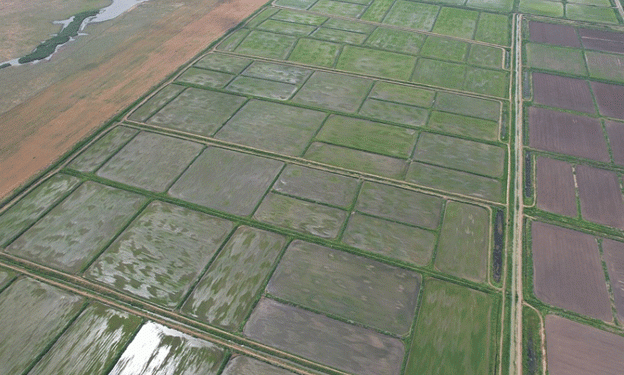As the harvest season reaches its peak in the Volgodonsk district of the Rostov region, the focus is on one of the northernmost areas in Russia where rice is cultivated—the outskirts of Ryabichev hamlet. By September 28, 2024, a total of 632 hectares of rice had been harvested, representing a portion of the 3,597 hectares of irrigated land dedicated to rice farming in six local farms.
Despite the expansion of rice cultivation by 212 hectares compared to 2023, Volgodonsk’s average rice yield remains lower than southern parts of the region. This year, the district recorded an average yield of 58.3 centners per hectare, which translates to an estimated gross harvest of 3,687 tons. In contrast, regions such as Proletarsky district, which lie further south, report a significantly higher average yield of 69 centners per hectare.
Volgodonsk district accounts for 21.9% of the total rice cultivation area in the Rostov region in 2024, highlighting its importance in regional agriculture. Across the Rostov region, the total rice acreage has seen an increase of 1,757.5 hectares since 2023, bringing the total cultivated area to 16,453.6 hectares. This expansion is largely supported by irrigation systems, with the region drawing substantial amounts of water from the Tsimlyansk Reservoir. In 2023, water withdrawal for agricultural, industrial, and municipal use from the reservoir amounted to 1.7 cubic kilometers, or 8.5% of its annual inflow.
Despite these advances, challenges persist. The northern location of Volgodonsk likely contributes to the slightly lower yields compared to more southern districts. However, ongoing improvements in irrigation infrastructure and careful management of water resources from the Tsimlyansk Reservoir provide a strong foundation for future growth.
While Volgodonsk’s rice yields may be modest compared to southern districts, the region’s steady expansion in rice cultivation indicates strong growth potential. As irrigation and agricultural practices continue to improve, Volgodonsk may close the yield gap with its southern neighbors, contributing even more to the overall rice production in the Rostov region.
Error




